How a Beginner's Mindset Can Help You Run Better
Plus, the context you need to appreciate the upcoming Hardrock 100
This newsletter has grown considerably, thanks to you! This week, I’m introducing a new feature to thank and reward you for sharing my newsletter with others. Use this “refer a friend” button to receive credit toward a complimentary paid subscription. More details coming in a bonus post tomorrow.
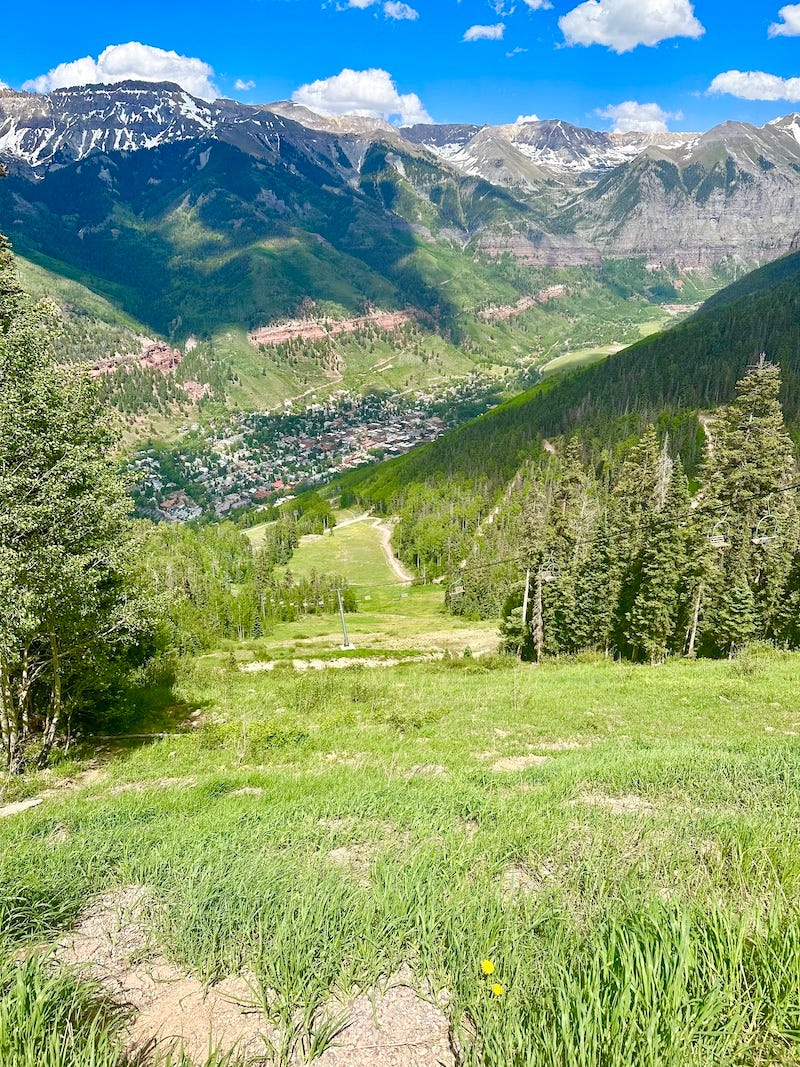
For the seventh year in a row, I celebrated July 4 with a hill climb race in Telluride. It’s called the Rundola because it follows the gondola’s line up a ski slope, gaining nearly 1800 feet. It’s only about 1.2 miles long, but it’s one of the most intense and difficult races I do annually.
As I approached the start line with a mixture of love and hate for it, I wondered why I put myself through this challenge. Similar to the Thanksgiving Turkey Trot 5K I used to run annually in California, I’m drawn to experience an effort level I rarely duplicate in training—a level where you feel you might puke or collapse from exertion. I also know I’ll get a fitness boost from this prolonged high-intensity workout.
Plus, I love being in this all-ages, all-abilities crowd that comes together with a communal desire to take the ridiculously hard way up the hill as a way to kick off a holiday. I know I will be stronger and perform better in their company than if I were attempting it solo.
But mostly, I keep at it to show I’ve still got “it,” meaning the bravery to show up and do it, in spite of a fear that I’ll discover I’m weaker than in years past. Two women there inspire me—past winner and perennial top-10 finisher Kari Distefano, who’s 10 years older than I but, at 64, always beats me by few minutes; and Lois Major, 62, who has beat me in the past, and we engage in a friendly competition.
Who knows, maybe if I keep at this into my 60s, I’ll also be a mentor and inspiration to younger women running it.
We ultrarunners generally cultivate a tortoise pace, and most of our running registers in Zone 2, or up to 70 percent of maximum heart rate. This aerobic effort feels manageable and sustainable. By contrast, running a 5K race pace (or a comparable effort in a hill-climb hike) spikes my heart rate well above 80 percent of maximum, and at times I get near the unsustainable anaerobic zone. I breathe so hard when racing like this that my ability to talk is reduced to a gasping short phrase.
When the gun for the Rundola went off, I surged forward and committed to clambering up that hill as best I could. My heart felt like it would explode from my chest while my thighs and lungs burned. Unlike the Turkey Trot 5K that tested my road-running speed, this race tests mountain powerhiking skills. The hill becomes as steep as a ladder. I concentrated fully on taking big steps as strong and straight as possible, not wasting any forward momentum on lateral movement. At times, my hike turned into a climb as hands grasped bunches of grass at eye level.
When I first ran the Rundola in 2017 at age 48, I finished in 34:10 and won my age group. Since then, the race grew from a few hundred participants to some 700, and the competition grew stiffer, too. I lined up this year with a goal to aim for 34 minutes and “empty the tank,” meaning, reach the top fully depleted. “You can do anything for 34 minutes,” I told myself.
A couple of minutes into the race, as I struggled to gain purchase on loose rock on the first part of the slope, I glanced at my watch and realized I had screwed up pushing the start button at the start. Damn. I wanted my stopwatch to monitor my self-imposed time limit of 34 minutes. But in the next instant, I felt liberated and less beholden to my watch. My time at the finish would be a surprise.
As I concentrated on the footsteps of the person in front of me on the hillside and strategized where to pass him—because passing requires a burst of effort that I pay for with a bit of hyperventilating—I felt that surely I was way behind last year’s time of 33:10, which was my Rundola PR. I probably wouldn’t even break 34. We were so slow, we were close to crawling toward the final pitch to the summit.
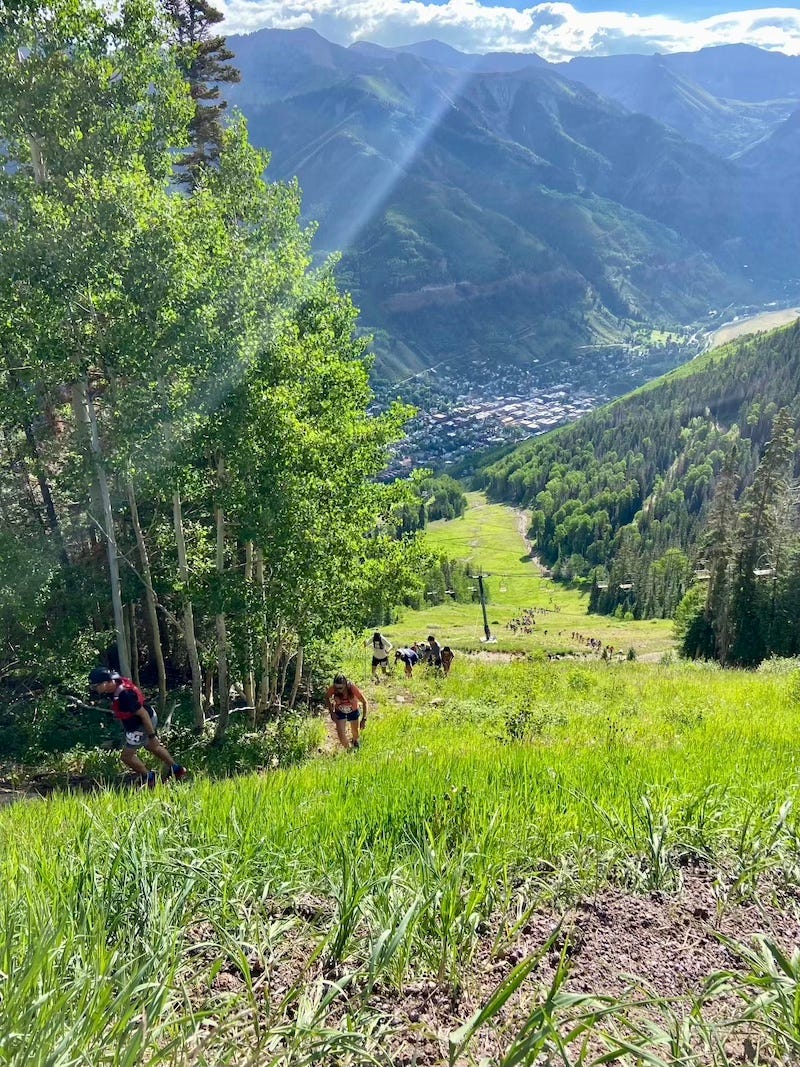
Then I remembered what it felt like to do it the first time in 2017, when my kids were cheering me from the top, and when I felt amused and mildly disbelieving that any of us would willingly do this hill climb. It was crazy, it was fun, it was new! What if I had that mindset again? What if I treated this as my first time and gave it my all with no performance expectations?
That change in mind frame—from an experienced competitor chasing past times, to a first-timer full of excitement instead of expectations—gave me a boost of positivity. I crested the hill and willed my legs to run to the finish line, where the clock surprised me by showing 33 minutes flat. I crossed in 33:08, a 2-second personal best on this route.
I was 15th woman overall and won my age group. But the 64-year-old Kari still beat me by almost 3 minutes and finished in the top 10—she’s incredible. All the other women ahead of me were under 40 years old.
Cultivating a beginner’s mindset
I was able to alter my perspective during the last part of the race, and regain some of a beginner’s wonder and enthusiasm, in part because of a workshop I gave last Friday with beginners.
I hosted a trail running/hiking/safety workshop for 10 women with the Telluride Women’s Network, a social group. Most of the women who signed up were over 60, and a couple were around my age in their late 40s or mid 50s.
I knew that to attract anyone to sign up, I would need to make running entirely optional. I pitched it mainly as a trail-safety workshop to gain confidence while hiking.
We started with a discussion and demo of the things I wear and carry to prevent or troubleshoot three of the biggest risks to hiking or running trails, especially in the backcountry: (1) getting hurt from a trip-and-fall; (2) getting lost; and (3) thermoregulation (meaning, getting too hot or too cold). Most of this safety advice is listed in the second half of this post.
Then I assured them that hiking is integral to mountain running and that I embrace hiking as a lower gear of running.
“Mountain running is a process of constantly shifting between running and hiking, doing whichever feels most efficient and sustainable. To be a good trail runner, you need to develop your hiking skills,” I told them. Many were surprised to hear this, because they had an old-school road runner’s perspective that walking breaks are a sign of weakness.
I asked rhetorically, “Why run at all, if hiking is so great?”
I answered that sometimes you might feel like breaking into a run, because running feels fun or most efficient, and you should give yourself permission to do so and not think, “I’m too old for that” or, “I’m not a runner.” Sometimes fast hiking feels like an unnatural loud whisper—as if you’re holding back—whereas running would feel like a confident, more natural voice.
Moreover, running more so than hiking develops a strong cardiovascular system and strong muscles and bones. That, in turn, helps prevent age-related decline.
Emboldened, they followed me on a route that started downhill and easy and then, after a mile, connected to an optional hilly two-mile singletrack trail with challenging rocky and rooty terrain. I took the lead, and a hiker volunteered to act as sweep for the hikers so no one got left behind.
When we first gathered, all but two told me they were hikers and intended to hike the whole route. But once we started, at least half decided to try running and see how it felt.
“I haven’t run since high school!” said one.
“It never occurred to me to run on trails,” said another.
“I always thought I hated running,” said someone else.
I looked back and almost got teary because of the joy on their faces.
We paused at a hill so I could demonstrate some uphill and downhill techniques, and we took turns practicing powerhiking up and running down. Then we embarked on the single-track loop (some chose to stay on the flatter, smoother main trail so they could practice running more). We alternately jogged and hiked the tough trail’s downhill, then regrouped to hike back up the steep hill.

On the uphill return, one became very out of breath and apologized for needing several breaks, and I told her there’s nothing to be sorry about. She should congratulate herself on being out there. Everyone needs to go her own pace. Progress happens through a process of carefully stressing and pushing your limit, then allowing yourself to recover.
Afterward, the women looked flushed with endorphins and empowerment. I was so impressed and inspired by their willingness to learn and try new things to better experience the outdoors and improve their health. None of them seemed self-conscious about how they looked or how slow they went (or if they did feel this insecurity inwardly, they hid it and kept with the group anyway).
The workshop inadvertently helped me as an athlete by reminding me how it feels to approach my sport as a beginner, with low expectations and positive feedback. It transported me back to my first real run as an adult—the first Monday in March of 1994, shortly before I turned 25, when I ran three consecutive miles for the first time, twice as far as I’d ever run before. After that first run, I felt elated with sweaty satisfaction and amazed that I could run three whole miles.
When I face the challenge later this summer of another 100-mile ultra, I could pressure myself with time goals—which isn’t a bad thing, if it’s motivating. But I also could keep in mind how awesome and exciting it felt to run my first 100-miler, and rekindle that feeling. I think I’ll try to adopt and balance both mindsets—that of the goal-oriented seasoned ultrarunner, and that of the stoked rookie.
One woman emailed me afterward, “Loved your tips and advice. I always wanted to learn to trail run/hike and am excited to start my journey.”
Isn’t it fabulous that someone who I’m guessing is in her late 50s (maybe early 60s) is starting a new-to-her athletic outdoors-adventure journey?
It makes me wonder, what journey can I start if I let someone else teach me how to do something I always wanted to try, but I never did because it always seemed too complicated and difficult and not “my thing”? (River rafting comes to mind.)
What journey might you start?
Get ready for Hardrock (or at least, read about it)
It’s the time of year in the Silverton-Ouray-Telluride region when anyone who knows anything about mountain running gets Hardrock Endurance Run fever. Scores of Hardrock competitors and their crew show up to scout the course and feel the heady buzz leading up to the event, which starts Friday, July 14, at 6 a.m. and has a 48-hour cutoff.
Like last year, I’ll be at the start spectating, then I’ll load up my truck with aid station supplies and head to the Animus Forks aid station (at Mile 44 on this year’s counter-clockwise route direction) to spend at least a full day volunteering.
To learn about what makes Hardrock and its landscape special, I invite you to read some of my archived posts about it:
Hardrock’s Draw: Why the race matters to so many, and how the lottery works.
Anatomy of an Aid Station: How a Hardrock aid station functions, and what you can learn by watching and aiding the runners there.
How Kroger’s Canteen Got Its Start: A special slice of Hardrock’s early history, as shared by Chuck Kroger’s wife Kathy Green.
Digging Into the San Juan Mountains: Part 1 of a brief history of the surveyors and prospectors who preceded today’s mountain runners, with some personal family history woven into it.
The ‘Wild & Tough’ San Juan Mountaineers: Part 2 of Hardrock’s historical context. This post transcribes a talk by climber Pete Davis and shares incredible photos of the San Juan Mountaineers, with a great deal of history about my great-uncle Dwight Lavender, a founding member of the group. Note: Pete is giving a version of this talk in Silverton again on Tuesday, July 11, 6 p.m. at the Silverton School. If you’re in Silverton, don’t miss it! See the Camp Hardrock lineup of events for details.
For info on this year’s competitors, read iRunFar’s Hardrock preview article.
And that’s it! This week’s newsletter comes late in the day, rather than early Wednesday as usual, because I had to finish a freelance article for Trail Runner today. I’m excited to link to it next week.

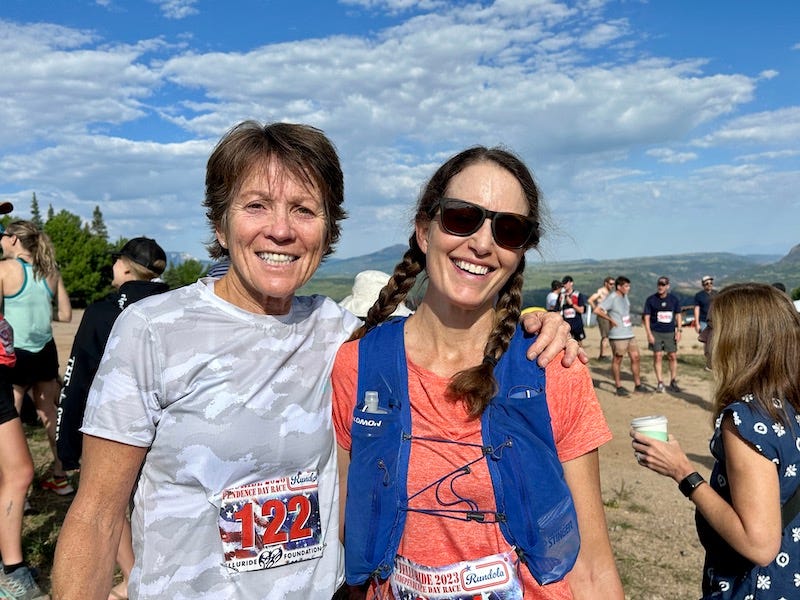
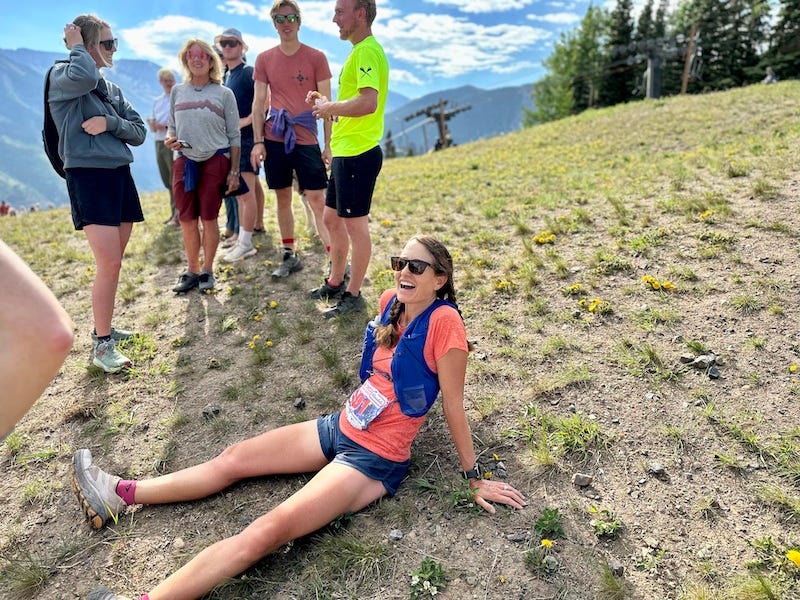
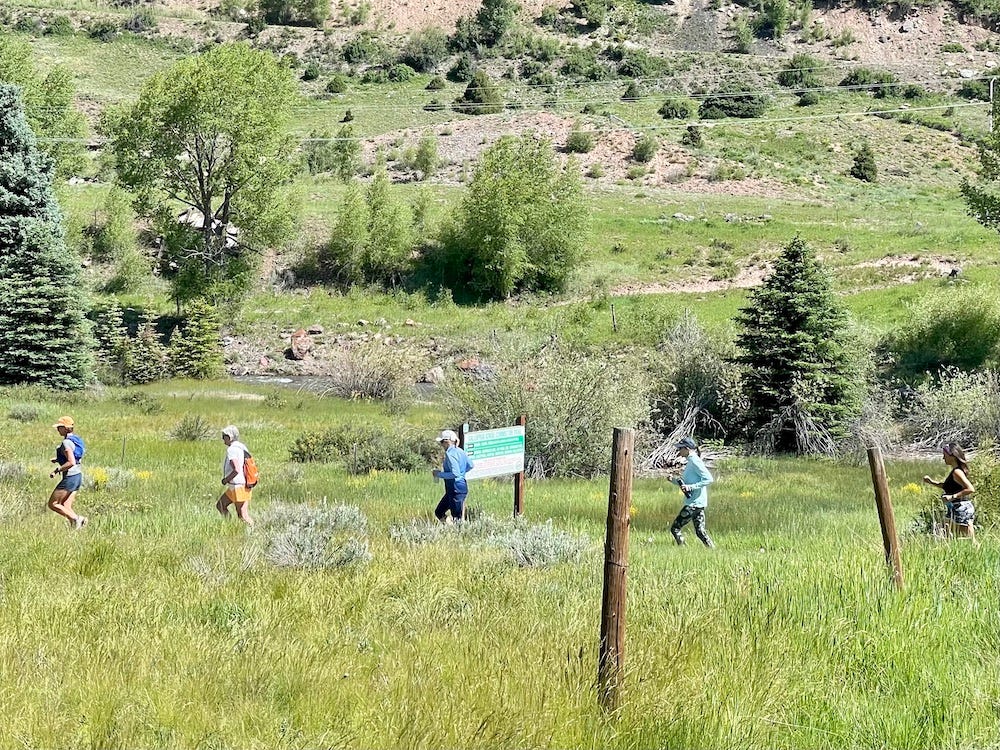
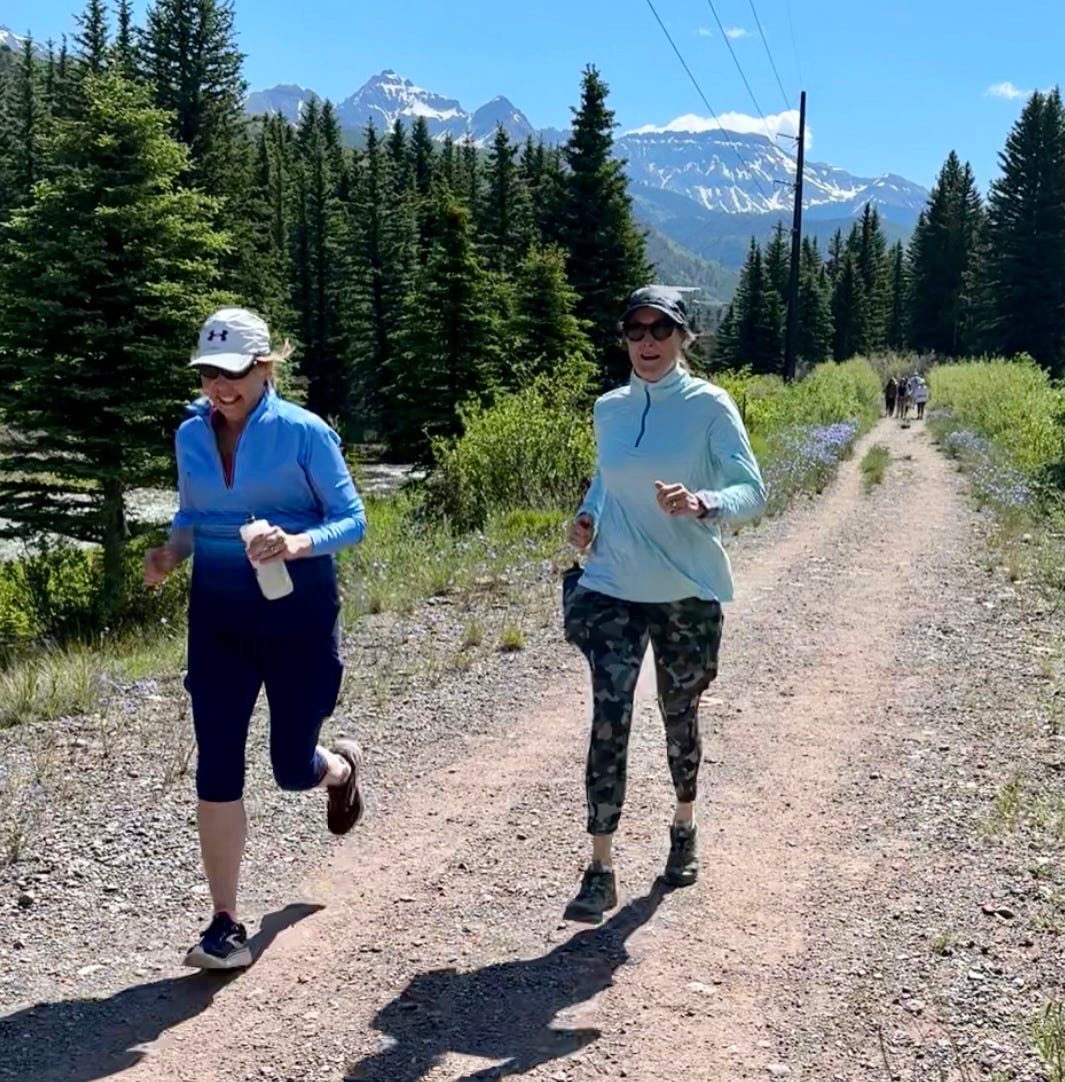

That’s awesome. I’m in your general age group and it’s good to have a peer to remind me we can still PR and keep getting it done. Great that you are encouraging others to join us 🤣❤️
Wow, that route indeed looks intense!
Mountains have taught me so much about running. When I first started learning to run, there was a steep uphill at the end of the forest path I frequented which required me to slow to over 10 minutes per kilometer to make it up. I learned from this a valuable lesson for running, and for life: to make it through, sometimes I've gotta slow down to the extreme. As a running friend told me then, "the only pace too slow is not to move at all."
I also really appreciate your description of combining running and hiking, although, so far, my experience has been a bit different. I am both a runner and hiker, but when I tried doing them in the same excursion, I ended up tripping because the shift in gait threw my balance off. Once I even injured my knee. But maybe I should give it another try, slowly and carefully....